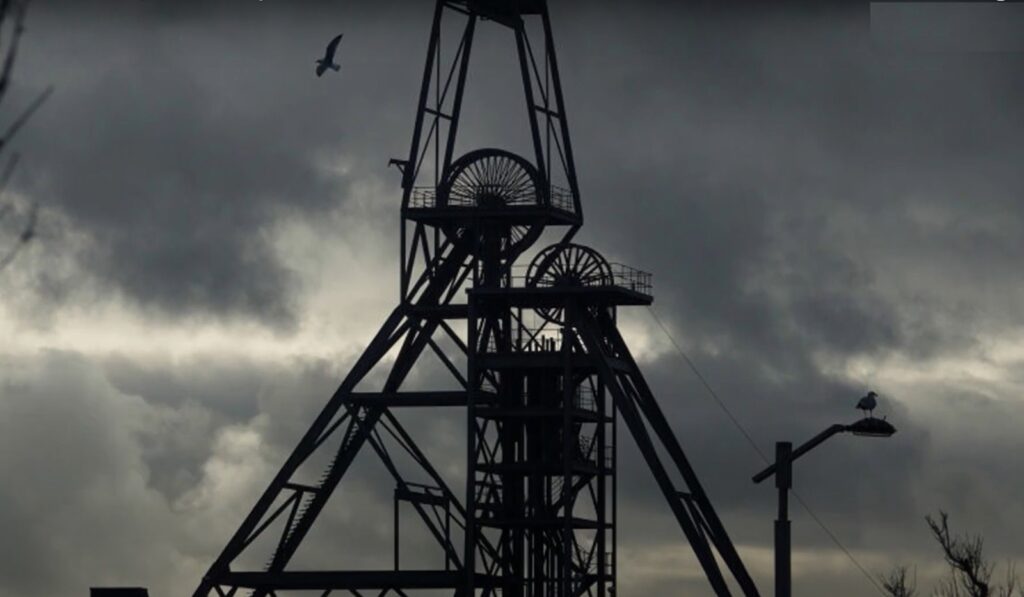It’s no real surprise that when miners come to London to talk about metals and finance the weather comes up. What has been uncommon is the extent to which the experts’ forecasts diverge on the storms that lay ahead. Do they fundamentally change the industry? Who are the big winners and losers likely to be?
In the week in which the UK turned off its last coal-fired power plant, ending 142 years of burning the fuel, London Metals Week 2024 heard the “asset class of critical minerals” was now driving the energy supply chains of the future.
In London for the FT Mining Summit, TechMet CEO Brian Menell said mining and metals markets were at the beginning of the “most severe supply-demand dislocation as the energy transition accelerates. And this is a 20-year supply-demand dislocation”.
TechMet, backed by public and private funding, is a virtually unique US government proxy trying to forge a broader position in global “technology metals” supply chains.
“It is a tough landscape but one we have to engage in and succeed in because the implications of ongoing failure are obviously very considerable,” Menell said.
TechMet’s founder said earlier this year the world was heading into a massive global transformation in energy and mobility that would redefine the future global commercial, industrial and technological landscape.
“And the winners – countries and companies – are going to be those that secure reliable, preferential access to critical minerals supply chains now,” he said.
“The losers are going to be those that don’t. And the cost of losing is very, very high.
“And the benefits of winning are crucial for industrial competitiveness, for jobs, for growth.”
Rising geopolitical heat and potentially very volatile conditions ahead for commodity and financial markets have been recurring talking points among mining and metals leaders and analysts in London over the past couple of weeks. World Gold Council senior market strategist John Reade said 30 new price highs in 2024 for “geopolitical mineral”, gold, a barometer of what was going on in the world, “tells you a lot about the geopolitical landscape that we’re in at the moment”.
International Council on Mining and Metals boss Rohitesh Dhawan said the “temperature of the mining industry … is warm and it’s getting hotter”.
“M&A activity is picking up. Governments are pouring money into the sector,” he said.
“The US and the EU are more engaged in mining than ever before, joining Canada and Australia in a kind of a quad of Western governments as a counterweight to the dominance of China.
“The big question, of course, remains whether the warmer winds from the west are enough to counter the chill that China is experiencing.”
George Cheveley, veteran portfolio manager in the London office of investment firm, Ninety One said: “We always said oil [equals] geopolitics and metals is sort of under the radar.
“Of course we’re in an energy transition and we’re moving from fossil fuels to electrification, and therefore now metals are political. They’re part of the energy system.
“It’s good in a way. Three years ago people just thought mining was a dirty business of no use, really. And now people talk about it in the context of critical minerals being absolutely vital.
“But with that comes a lot more attention politically, with protectionism and [nationalism].”

Chief development officer at Newmont Peter Toth said the gold major Newmont was growing its exposure to copper, perhaps now the most geopolitical mineral of all, including inorganically via deals such as last year’s US$16.8 billion takeover of Australia’s Newcrest Mining. He said resource nationalism and resource engagement from governments were at unprecedented levels.
“It’s a new normal,” he said.
“I joke that the fastest growing function in our organisation is the government relations team because … you just have to be engaged; [you have to] understand, forecast, predict. And the usual story we all tell is that [it takes] 10 years to develop a mine from finding it to commissioning it. There’s possibly three changes of government in between. And that’s just within one country.
“And then you add the geopolitical context in terms of the polarisation that is just part of our world now.”
For the wider range of critical, or strategic, minerals expected to underpin the world’s energy and transport shifts, “the volatility is coming from all angles”, according to McKinsey & Company partner Alex Kazaglis.
“On the supply side, the investment is taking its time,” he said. “The demand side … is coming from the energy transition. But if we look at Europe’s energy transition, around 40% of that electricity demand is at risk, in our view. And then you layer on top of that tariffs and government intervention, and you’ve got a huge amount of volatility. I think what we’d say, firstly, is there’s opportunity in volatility.
“We’re struck by the response in supply from the lithium market and from the nickel market and their ability to respond quickly. But ultimately, there’s three things that businesses need to succeed in a volatile climate. Firstly, they need an execution edge, which is keeping costs low and making sure that they’re innovating. Secondly, a capabilities edge, which means you need to be making decisions quickly. You need to be looking out into the medium term. And third, we would say, an insights edge, which is knowing the markets really well.”
On winning in tricky conditions, Kazaglis cited the “King of the Wet”, Formula 1 legend Ayrton Senna: “You can’t overtake 15 cars when the sun is shining, but you can when it rains.
“You’ve got to drive like Ayrton Senna.”
Kings of the wet
In the race for strategic minerals and metals dominance most of the cars out in front are Chinese made. That also applies to its domestic electric-vehicle fleet and infrastructure permeation.
Reasons for this depend on where you sit in a polarised world. But to China Molybdenum Co (CMOC) vice chairman and chief investment officer, Steele Li, the bottom line is simple enough: “We’re not just talking, we’re doing.
“That’s maybe the difference I see [between] Chinese and Western [governments and companies].
“You can see how many EV cars are actually running on the road [in China]: probably 50%. And you can see all the charging systems we’ve been building up to facilitate that revolution. You can see … the wind farms and all the solar facilities. It’s real; it’s there.
“[If] it’s hard for you to find the data, just visit more often to China. Go see by your eyes.
“This [is the] energy transition.
“I think what China has proved to the world is that building up very strong capacity [and] capability in the whole ecosystem is very important.
“The processing and manufacturing capability – all the ecosystem – we’re not [just] doing in China, but also going abroad and working with partners globally to build up and to speed up their initiatives, like in Latin America, like what you have seen in Europe and Africa.
“In the recent 10 years you look at all the investment going to Africa, going to DRC [the Democratic Republic of the Congo]; going everywhere. The ecosystem is very important … if you’re thinking about how to deliver a project in a speedy way and also under the budget.
“To me it’s [energy transition] a global trend. For a lot of commodities China is more than 50% consumer. In the past 15, 20 years, no doubt China is the key driver globally.
“But I think you will see [much more future] investment not only driven by China, but it’s global. You can see lots of countries globally have their commitment to the climate change and also the carbon neutrality. We have our serious commitment to reach the carbon peak by 2030 and we’re going to achieve this carbon neutrality by 2060.
“So when I talk about [China’s next growth] engine, I’m talking about an engine with similar size.
“I’m talking about the whole green renewable energy transition, so quite a big theme. And if you’re thinking about how it’s related to different sectors, and also the metals and the commodity consumption, I think it will be a very important and a critical driver for the future, and … I’m talking about 10 years, 20 years, 30 years.”

Does the speed of the leader determine the pace of the chasing pack? Maybe.
TechMet’s Menell said: “In the short term and medium term unfortunately there’s a national security and geopolitical overlay which is a massive market distortion, which is increasing every day, not diminishing, particularly in the context of the United States, where industrial protectionism and counter-China new Cold War sentiment have become inextricably baked into the bipartisan political landscape and are a reality that we have to deal with.
“We’re part-owned by the US government so everything we do has this national security and geopolitical overlay. And unfortunately, that’s going to radically distort markets in the meantime, and certainly in the US, and to somewhat of a lesser extent in Europe, we’re going to get a lot of industrial protectionism and a lot of national industrial competitiveness, and national security driven, market distortions in terms of carbon border adjustments, in terms of duties and tariffs, and in terms of government funding agencies, such as those that have invested in us in the US, deploying more and more capital in order to give preference to critical mineral supply chains that feed domestic industry and come through friendly hands.
“That’s going to create a lot of inefficiencies, a lot of inflationary pressures, and retard the energy transition.”
Alex Pickard, executive vice president, corporate development and investor relations at DRC copper miner, Ivanhoe Mines, suggested competition to participate in scarce, high-quality mineral projects might accelerate their development and could even see wider economic benefits come to regions – in the form of hard infrastructure – that had largely been ignored in 50 years of global mineral and metal-based industrial expansion.
“We actually welcome the competition,” Pickard said.
“It’s been a long time coming.
“It was very, very difficult for us to raise capital 10 years ago to get the train on the tracks and actually start building out what is now the third biggest copper mine in the world [at Kamoa-Kakula].
“It wouldn’t have happened without the support of the Chinese, and they have a much more long-term and holistic view when it comes to commodities. Not only just the business of mining but also the infrastructure that goes around [mines]. They provide the full package.
“I think we’re in a good position now where there is capital emerging from alternative sources. There is now a coalition of Western governments that’s looking to invest in mining projects, but they’re coming from a long, long way behind and the fruits have not really come to bear yet.”
Gracelin Baskaran, director at the US-based Center for Strategic and International Studies (CSIS), said minerals had been a mainstay of Beijing’s foreign policy and China’s domestic industrial strategy for decades.
“It’s really just started in the US in the last five years,” she said.
“What we’ve seen since Russia [invaded Ukraine] is that we’ve really prioritised American energy security. We’re at an all-time high of oil production. In parallel … we’re going to build up our mineral security so that we can ensure we protect our economic competitiveness, our decarbonisation and our national security goals. But what you are going to see is that’s going to take decades.
“We’ve [also] seen that as the Chinese economy has declined there is a push from emerging markets to partner with new economies. We’ve seen the Middle East making big strides. The US, EU is down in Namibia and Congo. Japan is coming up. So we’re seeing diversification and dispersion of critical minerals very quickly as a way to reduce the risk.
“I always say it’s not about being anti-China or anti-US. You shouldn’t have one source of investment and one source of offtake. It’s not economically healthy.
“The big beneficiary of a lot of this that we haven’t talked about is India. India has the biggest population in the world. It has rising incomes. They’ve got aggressive domestic industrial policy. They’re both going to be a key demand driver and a supply driver. And they’re part of an enormous amount of bilateral, trilateral and quadrilateral agreements, including quad with Australia, the US and Japan.
“With China’s economy waning, India is going to play a bigger role.”
Driving into a new future
Other change agents in mining and metals markets are sovereign wealth funds.
“Over the last two years there’s an estimated $30 billion that has been put in from sovereign wealth funds in mining, which is a huge jump from 2021, which is really good,” said AlixPartners managing director Hassan Morsy.
“The reason I say it’s really good is because it’s this patient capital that we really need in mining right now, versus, you know, some of the other demeanours when it comes to investors.
“[Mining’s] permitting issues are real.
“While state jurisdictions a few years ago were getting more and more investor centric and really attempting to stabilise their regulation [and] attempting to attract investment, over the last few years this de-globalisation has caused things to retreat a bit.
“Sovereign wealth funds coming in with a soft strength in terms of government-to-government relationships is going to be part of the solution.
“They’re still chasing tier one assets … [and] I do think there needs to be more focus on tier two and tier three because this chase for tier one assets is not going to be great for the industry.
“So I think patient capital is definitely part of the puzzle and we should all welcome it.”
Toth said the “old normal” for mining and traditional connected finance markets was commodity price volatility. But wild swings for lithium and other metal pricing, and the perceived lack of incentivisation pricing for copper after rampant recent cost inflation, have kept a lot of funding sidelined despite the relative predictability of price cycles.
“I think the circumstances that we see today – the limited capital – create the circumstances for all the supply shortages that are expected in the medium and longer term,” said Ecora Resources CEO Marc Bishop Lafleche.
“I think the more interesting question is, why is there less capital available to the sector in the West, particularly the London Stock Exchange or the North American stock exchanges?”
Ecora is a London and Toronto-listed royalty and streaming company. While it’s not the poster child for the sector, LaFleche said the broader mining royalty and stream funding space had grown “by orders of magnitude” over the past 10-to-15 years, partly due to “a retrenchment of equity capital”.
He believes, though, that the real funding gap is on the demand side.
“The beauty of the energy transition, ultimately, is that the end product is electricity, and there’s a huge amount of demand for electricity,” he said.
“That’s something that I feel government policy should really address and can address. I don’t hear anyone saying today I would never own an electric vehicle because I’m against electric vehicles. People say I cannot charge my electric vehicle. Policy that drives that one simple medium will, of course, flow all the way back up the volume chain and let the market allocate capital within the mining sector to bring new supply to the market.”
Another medium that is going to fundamentally alter mineral and metal demand and supply patterns, probably with or without government intervention, is AI.
AI-utilised data centres reportedly already consume 1-2% of generated power globally. US investment bank Goldman Sachs said earlier this year that could grow 160% by 2030.
“We’re all very focused on EV-driven demand growth for critical minerals but the [clean] energy side of the demand growth equation is increasingly driven by AI,” said Menell.
“In two years that [2%] is projected to be 20% of the US power generation. And in five years it’s projected to be 100%. The data centres that AI is very heavily reliant on are very energy hungry.
“And certainly outside of China the big tech companies who are building and owning or using these data centres are very focused on having a low carbon footprint for the energy that their AI-driven systems require. And that will require massive enhancement of the renewable energy grid, which is going to require not only a lot of copper, but a lot of battery storage in order to balance wind and solar elements of those power grids.
“Nuclear, likewise, has to be a very, very important element of how grids need to evolve in order to create the power that AI is increasingly going to require.”
Grant Isaac, executive vice-president and chief financial officer at Canadian uranium major Cameco, said: “We’re increasingly hearing from our customers’ customers. We’re hearing from the big tech companies. They want to know where the fuel is coming from for the electricity that they want to procure.
“When we start hearing from our customers’ customers, that’s a pretty good leading indicator that something real is happening on that big electrical demand stage.
“We obviously saw a climate security crisis get wrapped around an energy security crisis that’s, in fact, now wrapped around a national security crisis. And that has brought nuclear back to the table, because nuclear provides electrons that are 24 hours; they are base load, and they’re carbon free.
“And that’s pretty attractive in today’s world.
“When we’re restarting reactors that were shut down several years ago; when we’re extending the life of reactors that we thought were going to shut down early, when we’re going through long-term extensions of reactors that would hit their normal license limit and building, by the way, 60 big reactors around the planet today, the outlook for nuclear demand is very, very strong.
“And that doesn’t even include the possibility of small modular and advanced reactors. They’re just going to add more demand.
“So the fundamentals for our business have never been stronger.”









